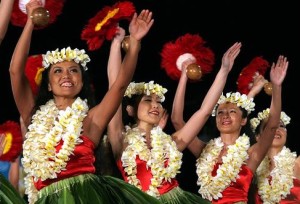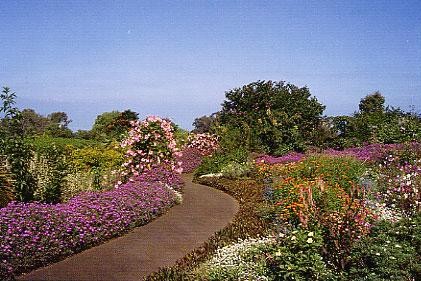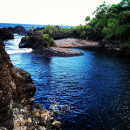 The Hula is Hawaii's signature dance form accompanied by chant (oli) or song (mele). The dance was developed by the Polynesians who originally settled in the Hawaiian Islands.
The Hula is Hawaii's signature dance form accompanied by chant (oli) or song (mele). The dance was developed by the Polynesians who originally settled in the Hawaiian Islands.
According to Hawaiian folklore, the first hula was performed by a god or goddess which makes the dance a sacred ritual.
It used to be danced by men only but now, women can also perform it. The Hawaiian hula is unique and totally different from other Polynesian dances. It started as a form of worship during religious ceremonies and has gradually evolved into a form of entertainment.
The Hula is a complex art form. Every movement has a specific meaning, and every expression of the dancer's hands represents something. For example, in imitating a shark or waving palm tree, the true hula dancer believes he or she becomes the shark or palm.
Chants or oli accompany the movements and help in telling the dancer's story. Traditionally it was not the dancer's hands but the words that counted the most. Today, because so few understand the language of the chants, increasing emphasis has been placed on movements and gestures.
The dancers also wear traditional costumes consisted of lei for the head and shoulders, pau or skirt (made out of tapa), and kupea or anklets fashioned out of dog-teeth or whale bone.
Because the Hula is a religious dance, dancers must be trained at the halau hula (hula school). Students undergo very strict training and must follow elaborate rules of conduct (kapu) and had to obey their teacher (kumu). Hula dancing students are not allowed to cut their hair or nails, certain foods are also forbidden, and no sex is allowed. A memorizer (hoopaa) assisted the kumu with the chanting and the drumming. A head pupil, selected by the students, was in charge of discipline. Students perform the Hula on a platform with an altar dedicated to Laka. This is decorated with vines and flowers.
On graduation day, a special ceremony is done following a strict protocol. Graduating students remained in the halau for several days rehearsing, undergoing ritual purification in the sea, offering prayers, eating and so on. A graduation feast is celebrated featuring a pig and, lastly, the dismantling of the altar followed by the ending of the kapu.
Some halau were located in a heiau (temple), in an area set apart for the hula. One of the best known halau can be found at Kee, near Haena on Kauai's north shore.
An old style of dance called Hula kahiko is performed in traditional costume to accompanying chanting and percussion only. Hula auana (modern style) is accompanied by songs, ukuleles, guitars, and other instruments with dancers in imaginative costumes.
The hula almost vanished in the 19th century because the missionaries considered it vile and heathen. King David Kalakaua is generally regarded as saving it during the late 1800's, when he formed his own troupe and encouraged the dancers to learn the old hula.
Today, several hundred halau hula (hula schools) and less formal hula groups are active on every island and the mainland, teaching hula to thousands of students and keeping the old ways and traditional Hawaiian culture alive.





